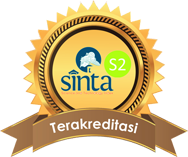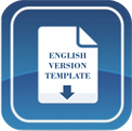Fostering Environmental Knowledge and Literacy with Natural Products Experiment Activity Worksheets
DOI:
https://doi.org/10.15575/jtk.v9i1.28263Keywords:
experiment activity worksheets, environmental knowledge, environmental literacy, natural productsAbstract
This research aims to improve student environmental knowledge and literacy with natural products experiment activity worksheets. The methods used in this research are pre-experimental. The subjects of this research are 15 students from an Islamic high school. The research results show that natural products experiment activity worksheets effectively improve students' learning outcomes. The research results indicate that the pre-test results obtained an average score of 50.8, indicating that students needed help understanding the material before using natural products' experiment activity worksheets. Post-test results showed an average score of 80.5, indicating that students experienced increased learning outcome scores. The average normalized gain score is 0.59, indicating a medium increase in chemistry learning outcomes. The self-assessment questionnaire on environmental literacy, conducted after using the integrated natural products experiment activity worksheets, showed that knowledge had an average score of 4.33 and was rated as excellent, behavior had an average score of 4.31 and was rated as good, and attitude had an average score of 4.37 and was also rated as good. Overall, students' environmental literacy was rated as outstanding, with an average score of 86.74%.
References
Afrianda, R., Yolida, B., & Marpaung, R. R. T. (2019). Pengaruh program adiwiyata terhadap literasi lingkungan dan sikap peduli lingkungan. Jurnal Bioterdidik: Wahana Ekspresi Ilmiah, 7(1), 32–42. Retrieved from https://jurnal.fkip.unila.ac.id/index.php/JBT/article/view/17117/12201
Allamin, S., & Yonata, B. (2016). Keterampilan Proses Sains Siswa Pada Materi Asam Basa Kelas XI Di SMAN Ploso Jombang. Unesa J. Chem. Educ., 5(2), 247–251. https://doi.org/10.26740/ujced.v5n2.p%25p
Amali, Z. B., & Leman, S. A. (2019). Implementing a module on aluminium casting practices at a state vocational high school SMKN 2 Wonosari. In Journal of Physics: Conference Series, 1273(1), 1-9. https://doi.org/10.1088/1742-6596/1273/1/012027
Andromeda, A., Bahrizal, B., & Ardina, Z. (2016). Efektifitas kegiatan praktikum terintegrasi dalam pembelajaran pada materi kesetimbangan kimia kelas XI SMA/MA. Eksakta, 1, 45–51. Retrieved from https://ejournal.unp.ac.id/index.php/eksakta/article/view/6101/4738
Ardoin, N. M., Bowers, A. W., Roth, N. W., & Holthuis, N. (2018). Environmental education and K-12 student outcomes: A review and analysis of research. The Journal of Environmental Education, 49(1), 1-17. https://doi.org/10.1080/00958964.2017.1366155
Asyhari, A. (2015). Profil peningkatan kemampuan literasi sains siswa melalui pembelajaran saintifik. Jurnal Ilmiah Pendidikan Fisika Al-Biruni, 4(2), 179–191. http://dx.doi.org/10.24042/jipfalbiruni.v4i2.91
Awang, T. S., & Zakaria, E. (2012). Module for Learning Integral Calculus with Maple: Lecturers’ Views. Turkish Online Journal of Educational Technology-TOJET, 11(3), 234–245. Retrieved from https://files.eric.ed.gov/fulltext/EJ989215.pdf
Choiriyah, N. (2015). Developing of interactive e-book media on subject matter of chemicals in daily life for high school deaf student. UNESA Journal of Chemical Education, 4(1), 119–125. https://doi.org/10.26740/ujced.v4n1.p%25p
Christianto, H., & Azmi, J. (2014). Penerapan model pembelajaran kooperatif tipe student facilitator and explaining (SFAE) untuk meningkatkan prestasi belajar siswa pada pokok bahasan kimia koloid di kelas XI IPA SMA Santa Maria Pekanbaru. Jurnal Pendidikan Kimia, 6(02). https://doi.org/10.24114/jpkim.v6i2.5594
Croucher, S. M., & Cronn-Mills, D. (2022). Experimental Design. In Understanding Communication Research Methods. New York: Routledge.
DomÃnguez, A., Saenz-de-Navarrete, J., De-Marcos, L., Fernández-Sanz, L., Pagés, C., & MartÃnez-Herráiz, J. J. (2013). Gamifying learning experiences: Practical implications and outcomes. Computers & education, 63, 380-392. https://doi.org/10.1016/j.compedu.2012.12.020
Febriasari, L. K., & Supriatna, N. (2017). Enhance environmental literacy through problem based learning. Journal of Physics: Conference Series, 895(1), 12163. https://doi.org/10.1088/1742-6596/895/1/012163
Gover, A., Loukkola, T., & Peterbauer, H. (2019). Student-centred learning: approaches to quality assurance. EUA (European University Association). Retrieved from https://www.eua.eu/downloads/publications/student-centred%20learning_approaches%20to%20quality%20assurance%20report.pdf
Hadi, S., Rahardjanto, A., Budiyanto, M. A. K., & Husamah, H. (2020). Multidimensional Analysis of Environmental Literacy (Sensitivity, Knowledge, Belief, and Behavior of Environment) of Prospective Teachers. Prisma Sains: Jurnal Pengkajian Ilmu dan Pembelajaran Matematika dan IPA IKIP Mataram, 8(2), 122-138. https://doi.org/10.33394/j-ps.v8i2.3281
Herawati, M., Nuswowati, M., Susilaningsih, E., & Nurhayati, S. (2024). Upaya Peningkatan Pengetahuan serta Sikap Siswa melalui Pengembangan LKPD PBL Terintegrasi Literasi Lingkungan. Jurnal Inovasi Pendidikan Kimia, 18(1), 65–72. https://doi.org/10.15294/jipk.v18i1.46954
Hollweg, K. S., Taylor, J. R., Bybee, R. W., Marcinkowski, T. J., McBeth, W. C., & Zoido, P. (2011). Developing a framework for assessing environmental literacy. Washington, DC: North American Association for Environmental Education, 122. Retrieved from https://cdn.naaee.org/sites/default/files/inline-files/devframewkassessenvlitonlineed.pdf
Hunziker, S., Blankenagel, M., Hunziker, S., & Blankenagel, M. (2021). Experimental research design. Research Design in Business and Management: A Practical Guide for Students and Researchers, 221-234. Retrieved from https://link.springer.com/chapter/10.1007/978-3-658-34357-6_12
Hyde, J., Wright, J. S., & Xie, A. (2024). Progression from chinese high school onto a TransNational Chinese-UK University joint BSc degree in chemistry; an international study focussing on laboratory practical skills. Chemistry Education Research and Practice, 25(1), 151-170. https://doi.org/10.1039/D3RP00099K
Ilhami, A., Riandi, R., & Sriyati, S. (2019). Implementation of science learning with local wisdom approach toward environmental literacy. Journal of Physics: Conference Series, 1157(2), 022030. https://doi.org/10.1088/1742-6596/1157/2/022030
Ilma, S., & Wijarini, F. (2017). Developing of environmental education textbook based on local potencies. JPBI (Jurnal Pendidikan Biologi Indonesia), 3(3), 194–201. https://doi.org/10.22219/jpbi.v3i3.4540
Kennedy, C. E., Fonner, V. A., Armstrong, K. A., Denison, J. A., Yeh, P. T., O’Reilly, K. R., & Sweat, M. D. (2019). The evidence project risk of bias tool: assessing study rigor for both randomized and non-randomized intervention studies. Systematic reviews, 8(3), 1-10. https://doi.org/10.1186/s13643-018-0925-0
Kholid, A. (2012). Promosi kesehatan dengan pendekatan teori perilaku, media, dan aplikasinya. Jakarta: Rajawali Pers.
Khotim, H. N., Nurhayati, S., & Hadisaputro, S. (2015). Pengembangan modul kimia berbasis masalah pada materi asam basa. Chemistry in Education, 4(2), 63–69. Retrieved from https://journal.unnes.ac.id/sju/chemined/article/view/4882
King, D. (2012). New perspectives on context-based chemistry education: Using a dialectical sociocultural approach to view teaching and learning. Studies in Science Education, 48(1), 51-87. https://doi.org/10.1080/03057267.2012.655037
Kingsley, T. L., & Grabnerâ€Hagen, M. M. (2015). Gamification: Questing to integrate content knowledge, literacy, and 21stâ€century learning. Journal of adolescent & adult literacy, 59(1), 51-61. https://doi.org/10.1002/jaal.426
Kinslow, A. T., Sadler, T. D., & Nguyen, H. T. (2019). Socio-scientific reasoning and environmental literacy in a field-based ecology class. Environmental Education Research, 25(3), 388-410. https://doi.org/10.1080/13504622.2018.1442418
Kusumaningrum, D. (2018). Literasi Lingkungan Dalam Kurikulum 2013 Dan Pembelajaran Ipa Di Sd. Indonesian Journal of Natural Science Education (IJNSE), 1(2), 57–64. https://doi.org/10.31002/nse.v1i2.255
Lee, E., & Hannafin, M. J. (2016). A design framework for enhancing engagement in student-centered learning: Own it, learn it, and share it. Educational technology research and development, 64, 707-734. Retrieved from https://link.springer.com/article/10.1007/s11423-015-9422-5
Lestari, D. D., & Muchlis, M. (2021). E-LKPD berorientasi contextual teaching and learning untuk melatihkan keterampilan berpikir kritis siswa pada materi termokimia. Jurnal Pendidikan Kimia Indonesia, 5(1), 25–33. https://doi.org/10.23887/jpk.v5i1.30987
Lin, M. H., Chen, H. C., & Liu, K. S. (2017). A study of the effects of digital learning on learning motivation and learning outcome. Eurasia Journal of Mathematics, Science and Technology Education, 13(7), 3553-3564. https://doi.org/10.12973/eurasia.2017.00744a
Lutfauziah, A., Al Muhdhar, M. H. I., & Rohman, F. (2023). Curriculum Development for Environmental Education at an Islamic Boarding School. Journal of Turkish Science Education, 20(3), 490-503. https://doi.org/10.36681/tused.2023.028
Martin, F., & Bolliger, D. U. (2018). Engagement matters: Student perceptions on the importance of engagement strategies in the online learning environment. Online learning, 22(1), 205-222. Retrieved from https://eric.ed.gov/?id=EJ1179659
Nasution, R. (2021). Analisis tingkat literasi lingkungan mahasiswa FKIP Universitas Mulawarman dengan transformasi skor NELA (National Environmental Literacy Assessment). Jurnal Ilmiah BioSmart (JIBS), 7(1), 38–51. https://doi.org/10.30872/jibs.v1i1.423
Nisaâ, A., Sudarmin, S., & Samini, S. (2015). Efektivitas penggunaan modul terintegrasi etnosains dalam pembelajaran berbasis masalah untuk meningkatkan literasi sains siswa. Unnes Science Education Journal, 4(3), 1049-1056. Retrieved from https://journal.unnes.ac.id/sju/usej/article/view/8860
Notoatmodjo, S. (2003). Pendidikan dan perilaku kesehatan. Jakarta: Rineka Cipta.
Otto, S., & Pensini, P. (2017). Nature-based environmental education of children: Environmental knowledge and connectedness to nature, together, are related to ecological behaviour. Global environmental change, 47, 88-94. https://doi.org/10.1016/j.gloenvcha.2017.09.009
Prastowo, A. (2015) Panduan kreatif membuat bahan ajar inovatif. Jogjakarta: DIVA Press.
Riduwan, D. (2014). Metode dan teknik menyusun proposal penelitian (untuk mahasiswa S-1, S-2, dan S-3). Yogyakarta: Alfabeta.
Salwan, S., & Rahmatan, H. (2017). Pengaruh LKPD berbasis discovery learningterhadap peningkatan hasil belajar siswa. Jurnal Pendidikan Sains Indonesia (Indonesian Journal of Science Education), 5(2), 25–31. https://doi.org/10.24815/jpsi.v5i2.9812
Schmidt, R., & Lee, T. (2019). Motor learning and performance 6th edition with web study guide-loose-leaf edition: From principles to application. Human Kinetics Publishers.
Sesmiyanti, S., Antika, R., & Suharni, S. (2019,). N-Gain Algorithm for Analysis of Basic Reading. In Proceedings of the 2nd International Conference on Language, Literature and Education, ICLLE 2019, 22-23 August, Padang, West Sumatra, Indonesia. http://dx.doi.org/10.4108/eai.19-7-2019.2289527
Sinaga, P. (2019). The effectiveness of using integrated science practice worksheet of integrated type to enhance environmental literacy. Journal of Physics: Conference Series, 1280(3), 032049. https://doi.org/10.1088/1742-6596/1280/3/032049
Stieff, M. (2019). Improving learning outcomes in secondary chemistry with visualization-supported inquiry activities. Journal of Chemical Education, 96(7), 1300-1307. https://doi.org/10.1021/acs.jchemed.9b00205
Suryawati, E., Suzanti, F., Zulfarina, Z., Putriana, A. R., & Febrianti, L. (2020). The implementation of local environmental problem-based learning student worksheets to strengthen environmental literacy. Jurnal Pendidikan IPA Indonesia, 9(2), 169-178. https://doi.org/10.15294/jpii.v9i2.22892
Sya’idah, F. A. N., Wijayati, N., Nuswowati, M., & Haryani, S. (2020). Pengaruh model blended learning berbantuan e-LKPD materi hidrolisis garam terhadap hasil belajar peserta didik. Chemistry in Education, 9(1), 76–83. Retrieved from https://journal.unnes.ac.id/sju/chemined/article/view/39581
Wardani, R. A. K., Karyanto, P., & Ramli, M. (2018). Analysis of high school students’ environmental literacy. Journal of Physics: Conference Series, 1022(1), 012057. http://dx.doi.org/10.1088/1742-6596/1022/1/012057
Downloads
Additional Files
Published
How to Cite
Issue
Section
Citation Check
License
Authors who publish with this journal agree to the following terms:
- Authors retain copyright and grant the journal right of first publication with the work simultaneously licensed under a Creative Commons Attribution-ShareAlike that allows others to share the work with an acknowledgement of the work's authorship and initial publication in this journal.
- Authors are able to enter into separate, additional contractual arrangements for the non-exclusive distribution of the journal's published version of the work (e.g., post it to an institutional repository or publish it in a book), with an acknowledgement of its initial publication in this journal.
- Authors are permitted and encouraged to post their work online (e.g., in institutional repositories or on their website) prior to and during the submission process, as it can lead to productive exchanges, as well as earlier and greater citation of published work (See The Effect of Open Access).








